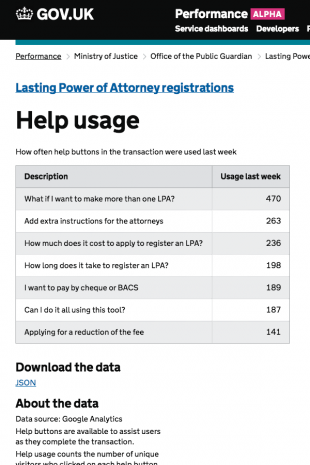Mike recently blogged about the service transformation for the Carer's Allowance exemplar and mentioned failure demand. I wanted to go into this in a little more depth and show how we can measure and reduce failure demand for online services.
What we mean by demand
As defined by Professor John Seddon, demand (people’s interactions with a service) can be classified in 2 ways:
First, value demand – demand that the service exists to provide, eg
- Can I claim child benefit?
- My circumstances have changed and I need to inform you.
Second, failure demand – demand caused by a failure to do something or do something right for a customer. It represents a failure of the service to work from the customer perspective, and provides important information about the features of the current design that work badly, eg
- progress chasing.
- I don’t understand how to do X.
- resending documents.
- unnecessary repeat visits.
- I don’t agree with your decision.
- When will I be paid?
Service improvement
Failure demand is a lever for improvement. If we can reduce failure demand, then our available capacity to service value demand goes up, and users are happier since they aren’t wasting time being frustrated.
Failure demand in digital services
An example of failure demand for a digital service is online help. For the Lasting Power of Attorney service, there is contextual help throughout the journey. The fact that people have to use this help, rather than being able to complete it unaided, is additional friction in their journey. The development team at the Office of the Public Guardian (part of the Ministry of Justice) have instrumented the usage of the help and are capturing this information.
By doing this, the team can see where in the journey and what help is being used. They can use this data to make changes to improve the service design / content. These improvements reduce or eliminate completely users resorting to the contextual help. This means that users complete the transaction quicker, without making errors.
We're currently adding functionality to the Performance Platform to capture the total journey time for some transactions, so we hope to soon share data about these improvements.
Follow James on Twitter.
